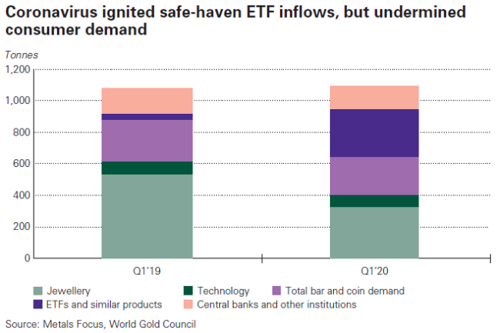
A ticket to a golden rally, will gold break its all-time record high?
For those investors, traders and market participants that actively trade or invest in gold, the last couple of trading days have truly been historic. Yesterday gold futures for the first time since 2011 closed solidly above a key psychological and resistance level which occurs at $1800 per ounce. That was followed today when physical or spot gold prices also traded above $1800 per ounce. Not since the historical run-up to the all-time highs in 2011 have we seen gold pricing trade above $1800.
The historical run in the middle of 2011 took gold pricing for a brief instant above $1900 to a record high of approximately $1920. However, that price point was unsustainable. In fact, on each of the two occasions during August and September 2011 gold traded above $1900, but closed below that.
.png)
During the historical run to the record price the highest close on record was $1898. What followed was a triple top at $1800 per ounce, with the third top occurring in October 2012. What followed was a multiyear correction taking gold pricing to $1040 per ounce at the end of 2015.
Gold’s historical climb to the record high occurred as a direct result of the actions of the Federal Reserve. In November 2009 the Federal Reserve responded to the recession created by the global financial crisis by initiating quantitative easing (called QE1). In order to stimulate the economy, the Fed began a program which added over $2 trillion to the money supply and at the time was the largest expansion of any economic stimulus program in history. The result was that the Federal Reserve’s balance sheet doubled from 2.106 trillion in November 2008 to 4.486 trillion by October 2014.
.png)
The recent rally which began in March when gold was trading for $1450 and took gold to $1800 per ounce is also a direct result of the actions of the Federal Reserve and the U.S. Treasury. In response to the global Covid-19 pandemic the Federal Reserve initiated quantitative easing for the first time since they ended QE3 in the last quarter of 2014.
In response to the global pandemic the Federal Reserve added$3 trillion to their balance sheets with the purchases of mortgage-backed securities, U.S. treasuries bonds and corporate bonds. The U.S. treasury allocated an additional 3 trillion to fund the “Cares act”, an aid package passed by the House and Senate.
While the investment community has weathered many financial recessions, a response to the pandemic puts us in uncharted territory. While many parts of the world have seen the number of reported daily cases decline, total cases of the coronavirus in the United States has now surpassed 3 million. The top infectious disease expert in the United States, Dr. Anthony Fauci, yesterday warned that "It's a false narrative to take comfort in a lower rate of death,". In fact, he warned that we could still be in the first wave of this pandemic in the United States. That being said it is not unrealistic to believe that the optimism of a quick recovery which is fueled recent rally in U.S. equities is unsustainable. It is also not unrealistic to believe that there will be further stimulus by both the Federal Reserve and the U.S. treasury if the pandemic takes more time to contain than anticipated.
Until there is an effective vaccine this pandemic will linger. As such we could see gold challenge, and surpass the all-time record high.
For those who would like more information simply use this link.
Wishing you as always good trading and good health,
By Gary Wagner
Contributing to kitco.com
David